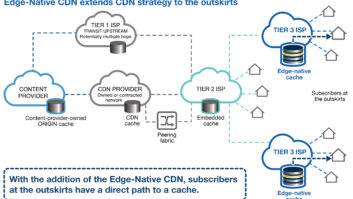
When the BBC and fellow broadcasters in the Digital Production Partnership (DPP) finally caved in to lobbying from Directors UK and the British Society of Cinematographers and agreed that Super 16mm film was acceptable for HD broadcast, it also stipulated that the format be classified as SD for delivery.
The answer to the conundrum lies in the revised guidelines issued by the DPP. It clearly states that S16mm must be delivered as an AS-11 UK DPP SD Shim file or on Digibeta tape – which is also standard definition.
Prior to the new ruling it was only possible to include 25% of content of any programme intended for an HD channel from a non-HD source. Now a whole programme can be originated in S16 provided it is delivered as SD.
In its statement of 23 October the BBC are careful to avoid categorising Super16 as SD quality, which was perceived as one of the main concerns of the lobby group.
Paul Collard, Deluxe 142’s vice president of Film and Digital Services explained: “BBC R&D conducted a very thorough comparison of 16mm with digital sources like the ARRI Alexa and it was clear that 16mm takes up a lot of bandwidth in the transmission frame and that compressors have to work much harder on that kind of material than on static-free, noise-free digital.
“They demonstrated how S16 film with grain transmitted through the HD transmission chain could go to air with artefacts and that was the issue we had to address.
“The tests proved conclusively that the TX chain can cope if an SD version is ingested, rather than an HD version, because in the SD version much of the grain has been stripped away.
“Quite simply, if you take in 16mm content as SD you create the best looking picture in the home since the transmission channel manages that better than as an HD source.”
The guidelines state: “Excessive grain can create distracting artefacts where high compression rates are used, significantly reducing the image quality delivered to the audience. S16mm film should be de-grained, to prevent a loss of resolution, de-graining must be used sparingly. To keep de-graining to a minimum, film speeds that meet production requirements should be used with adequate lighting so there is no need to push the film during processing.”
Producers wishing to originate in 16mm are still asked to scan and post produce in HD or 2K but to deliver an SD master.
“We specifically asked whether it was possible to take in an HD master and down-rez at the broadcaster’s end, but it was found that that also consumes too much bandwidth on the SD chain,” Collard added.
He points to long-running ITV drama Doc Martin (post produced at Deluxe) as a prime example of a Super 16mm production that has gone exactly this route. The BBC primetime production Merlin, from Shine, was also shot on Super 16mm.
The new standard resulted from a review by the BBC of its delivery requirements following the closure of the BBC HD channel, the launch of BBC One and Two HD and consultation with industry stakeholders.
It follows a campaign led by Directors UK and supported by Kodak, Deluxe, Panavision, i-Dailies, Cinelab and the BSC to gain choice for filmmakers in their creative format. Previously, the BBC in particular had been adamant that Super 16mm was not of high enough quality for its HD channels.
Some observers believe that this stance was entirely about cost cutting and that outlawing S16mm was solely intended to help drive down budgets. Strong counter arguments suggest that while film is more expensive in terms of stock, its workflow is more streamlined and producers are naturally more disciplined when shooting.
Working with high volume of high-resolution digital files, it is contended, can incur significant costs in post production, which result in very little budget discrepancy between the formats.
So will producers now be inclined to greenlight more 16mm dramas if a director and DP desire it?
“We’ve probably missed the boat,” admits Collard. “The infrastructure for processing has been significantly dismantled [though West London i-Dailies and CineLabs International have the capacity and the capability]. A few creatives and productions might come out and want to use S16mm, but it’s hard to call.”
By Adrian Pennington







